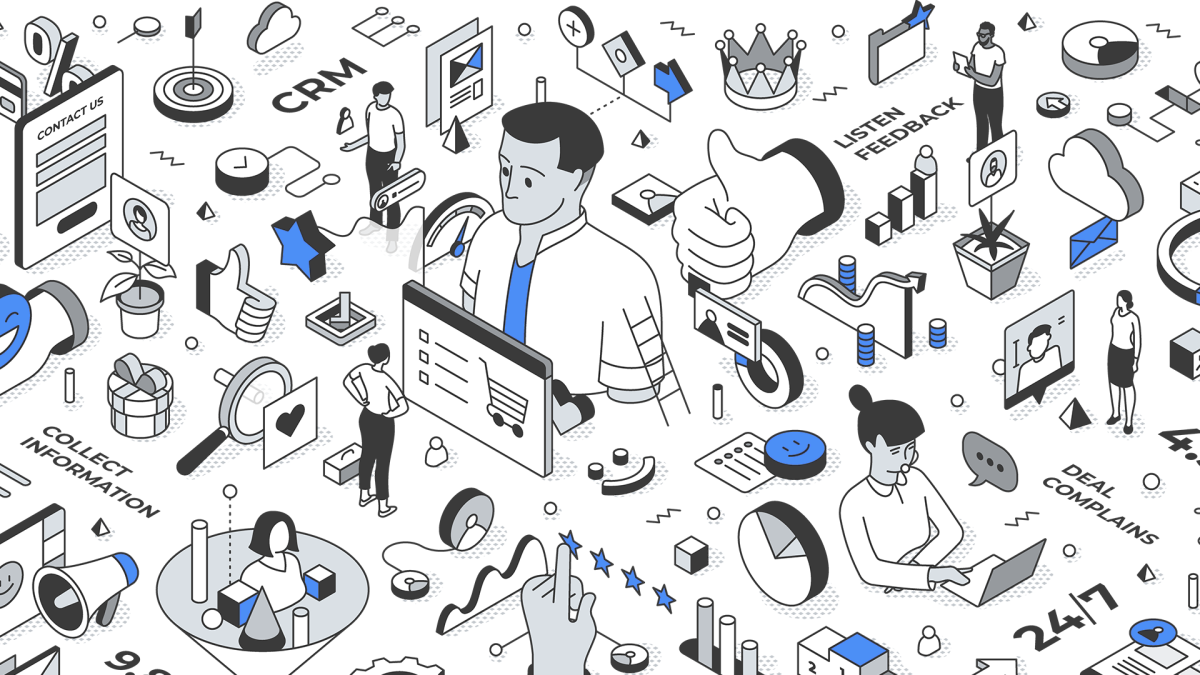
In the last five years, customer experience has begun to be taken more seriously in the processes of organizations, especially after the pandemic. However, this topic was already under discussion long before.
The Industrial Revolution, for example, was an initial milestone in the emergence of the Customer Experience concept, as companies began mass production, directly impacting the improvement of workers’ financial conditions. Although mass production didn’t allow for product customization according to customer needs, families gained greater purchasing power, significantly altering consumer behavior, a decisive aspect for the evolution of the customer experience field.
The evolution of Customer Experience throughout history
Between the years 1951 and 1990, marketing became a key element as brands began to communicate with many people simultaneously and their concepts were based on strategies. It didn’t take long for companies to start competing with each other, advertising the advantages and differentiators of their product or service.
Another significant change occurred with the end of the Cold War when capitalism was effectively consolidated. With this, marketing drastically transformed the relationship between the company and the customer, as well as the forms of advertising. The internet also altered buying behavior, eliminating geographical boundaries and further increasing the power of consumers.
After the internet, social networks gave prominence to the customer, allowing them to become a business influencer. Mass communication took a back seat to personalized communication focused on the customer experience.
Throughout this evolution, many things have changed, but one characteristic has remained the same: the consumer’s decision-making power. Faced with a wide variety of offers, the customer can decide from whom to buy, prompting brands to seek differentiation strategies such as price, delivery value, connection with their consumers, among others.
What is the relationship of all this with process formalization?
The relationship between customer experience and process formalization is too close, as processes are created to optimize resources and achieve better results. However, this will only be possible if we address the needs of our customers, as they are the reason for our existence.
In this new phase, companies no longer offer just products or services but solutions to the problems their customers have. Therefore, processes need to be aligned with reality rather than becoming something rigid that doesn’t allow adjustments in deliveries to solve new problems.
The Customer Journey and Process Formalization in Practice
To bridge theory with practice, Gart Capote created the method Customer Centric Business Experience Design, “to understand with more humanity and relevance the needs of market segments, develop new and powerful value propositions, design positive and memorable experiences, connect organizational processes to customer touchpoints and moments of truth, and finally, guide organizational leadership towards more strategic decision-making about customers.”
This method, called the Customer Journey, the title of Gart Capote’s latest book, emerged after the author identified process bottlenecks in commercial offerings. Much of what was offered by the marketing and sales departments of companies could not be executed in practice with the same skill promised due to the lack of processes for it.
For it to work, it is necessary to align customer needs with organizational processes, allowing the identification of what needs to be modified for the customer journey to be transparent.
According to Gart, the customer experience is a volatile composition of emotional records, created by how people interact with an organization when trying to fulfill a desire, address a need, or fulfill an obligation.
Considering these three aspects and customer touchpoints, the author mapped out eight stages to include the Customer Journey in the current processes of organizations.

After these steps, we can move on to the modeling of the new process. After all, the Customer Journey aims to achieve an effective, humanized and transparent modeling of the processes being analyzed.
Among the challenges for companies in the coming year, we can highlight the creation of a consistent and seamless journey across all channels, as well as accurately mapping the journeys and focusing on priorities to make the shopping experience more cohesive and frictionless. This action will ensure user satisfaction, time optimization in companies, and a profitable return on the investment made in mapping and adjusting processes.
Want to know more?
In December, Gart Capote was at Interact Solutions and gave a lecture on the Customer Journey integrated into Automated Processes.
Would you like to watch the full lecture? Click here and access the link.
Author:

Bianca Wermann
Journalist, Communication and Marketing Analyst at Interact Solutions.



